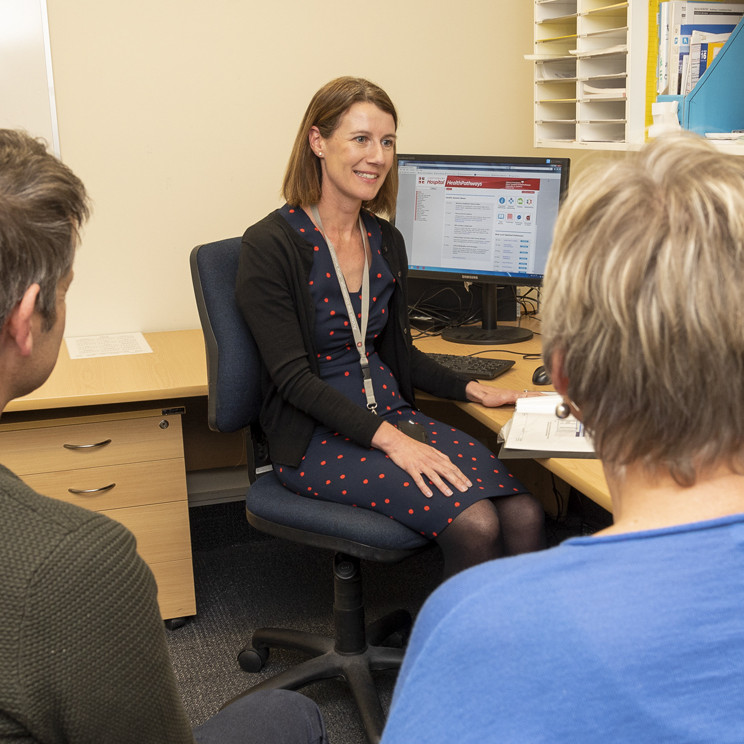Read about what staging means and how the different types of lung cancer are staged.
Download the whole lung cancer booklet
Our new booklet 'Understanding lung cancer' is available now.
Download Section Three of our lung cancer booklet: Staging lung cancer
- Staging is used to describe:
- the size of the cancer
- if there is cancer in the lymph nodes
- if the cancer has spread to other parts of the body
- Lung cancer is given a number from stage 1 to stage 4. The lower the number, the less your cancer has spread.
- Small cell lung cancer can be further divided into two stages:
- Limited disease
- Extensive disease
- Ka whakamārama te whakawāhanga:
- te rahi o te matepukupuku
- mehemea he matepukupuku kei ngā tīpona waitinana
- mehemea kua rauroha te matepukupuku ki wāhi kē o te tinana
- Ka hoatuna he nama mō te matepukupuku pūkahukahu mai i te wāhanga 1 ki te wāhanga 4. Mena he iti te nama, he iti ake te rauroha o tō matepukupuku.
- Ka taea te whakawehewehe anō i te matepukupuku pūkahukahu pūtau-iti ki ngā whakawāhanga e rua:
- Tahumaero here
- Tahumaero whānui

Staging non-small cell lung cancer
Staging uses the 'TNM' system to describe:
- The size of your cancer (T)
- If there is cancer in your lymph nodes (N)
- If the cancer has spread to other parts of your body (M)
Your treatment team will give the cancer a number from stage 1 to stage 4.
The lower the number, the less the cancer has spread. A higher number, such as stage 4, means a more serious cancer.
The stages are:
Stage 1 = Early lung cancer
Stage 2 = Loco-regional lung cancer
Stage 3 = Locally advanced lung cancer or regionally advanced lung cancer
Stage 4 = Advanced lung cancer
Staging small cell lung cancer
Small cell lung cancer can be divided into two stages, or doctors may also use the 'TNM' system:
- Limited disease: the cancer can be seen only in one lung and/or nearby lymph
nodes on the same side of the chest - Extensive disease: the cancer has spread outside the lung, within the chest
area, or in fluid around the lungs, or to other parts of the body.
Last updated: December 22, 2022
